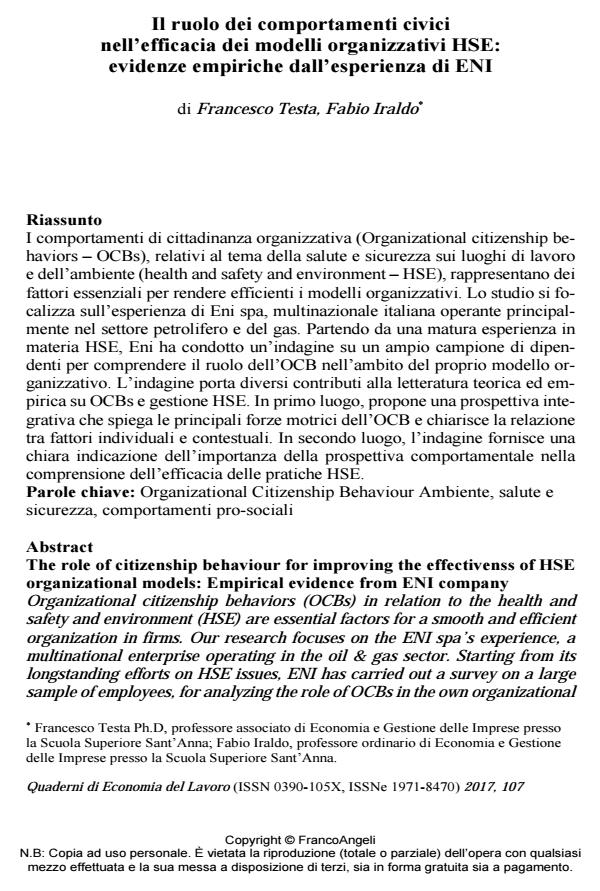The role of citizenship behaviour for improving the effectivenss of HSE organizational models: Empirical evidence from ENI company
Journal title QUADERNI DI ECONOMIA DEL LAVORO
Author/s Francesco Testa, Fabio Iraldo
Publishing Year 2018 Issue 2017/107
Language Italian Pages 20 P. 125-144 File size 342 KB
DOI 10.3280/QUA2017-107004
DOI is like a bar code for intellectual property: to have more infomation
click here
Below, you can see the article first page
If you want to buy this article in PDF format, you can do it, following the instructions to buy download credits

FrancoAngeli is member of Publishers International Linking Association, Inc (PILA), a not-for-profit association which run the CrossRef service enabling links to and from online scholarly content.
Organizational citizenship behaviors (OCBs) in relation to the health and safety and environment (HSE) are essential factors for a smooth and efficient organization in firms. Our research focuses on the ENI spa’s experience, a multinational enterprise operating in the oil & gas sector. Starting from its longstanding efforts on HSE issues, ENI has carried out a survey on a large sample of employees, for analyzing the role of OCBs in the own organizational model. The research provides several contributions on empirical and academic literature on OCBs and HSE management. Firstly, it provides an integrated approach for exploring the drivers of OCBs, clarifying the relationship between individual and contextual factors. Secondly, the research stresses the important of a behavioral perspective for understanding the efficacy of HSE practices.
Keywords: Organizational Citizenship Behaviour, environment, Health and Safety, pro-social behaviours
Francesco Testa, Fabio Iraldo, Il ruolo dei comportamenti civici nell’efficacia dei modelli organizzativi HSE: evidenze empiriche dall’esperienza di ENI in "QUADERNI DI ECONOMIA DEL LAVORO" 107/2017, pp 125-144, DOI: 10.3280/QUA2017-107004